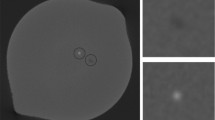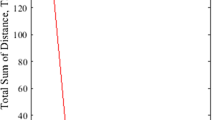Abstract
Data obtained from additive manufactured components can be analyzed to gain a better understanding of the manufacturing physics and to improve the quality of the parts. However, additive manufacturing is a complex process with many sensitivities. Machine learning has recently been used in additive manufacturing to model and evaluate processes. It is not possible to provide a single regression model to predict mechanical behavior as the properties will vary based on the component geometry and in regions within a component. To provide a separate regression model for each region, it is better to categorize several regions for multiple geometries by their post- fabrication properties (maximum and minimum principal stresses and distortion). Clustering is a method for analyzing the quality of parts with similar characteristics in diverse areas. Twenty-three distinct geometries with numerous geometric characteristics, each experiencing a different history of heat during fabrication (due to their thickness and material distribution), are analyzed in this study. Three different clustering methods are employed (self-organizing map, k-means clustering, and fuzzy c-means clustering) . The results are presented in two parts. For the first case, a localized approach is taken, where a comprehensive data set is utilized. The observed maximum coefficient of variance is 0.07969. For the second case, each shape is considered as an instance (sample) with general geometric characteristics. Similar trends between different clustering methods were extracted for the global approach, highlighting the potential of this method, but the clustering results are dependent on the clustering method. According to these results, the analysis of the local data provides a deeper understanding of post-fabrication properties clustering. Additional geometric-based characteristics will be developed to refine and improve the global approach.














Similar content being viewed by others
Availability of data and materials
Not applicable.
Code availability
Not applicable.
References
Pragana JPM, Sampaio RFV, Bragança IMF, Silva CMA, Martins PAF (2021) Hybrid metal additive manufacturing : a state–of–the-art review. Adv Ind Manuf Eng 2:100032. https://doi.org/10.1016/j.aime.2021.100032
Guo N, Leu MC (2013) Additive manufacturing : technology, applications and research needs. Front Mech Eng 8:215–243
Thawari N, Gullipalli C, Chandak A, Gupta TVK (2021) Influence of laser cladding parameters on distortion, thermal history and melt pool behaviour in multi-layer deposition of stellite 6 : in-situ measurement. J Alloys Compd 860:157894. https://doi.org/10.1016/j.jallcom.2020.157894
Pereira T, Kennedy JV, Potgieter J (2019) A comparison of traditional manufacturing vs additive manufacturing, the best method for the job. Procedia Manuf 30:11–18. https://doi.org/10.1016/j.promfg.2019.02.003. Digital Manufacturing Transforming Industry Towards Sustainable Growth
Muvvala G, Patra Karmakar D, Nath AK (2017) Online monitoring of thermo-cycles and its correlation with microstructure in laser cladding of nickel based super alloy. Opt Lasers Eng 88:139–152. https://doi.org/10.1016/j.optlaseng.2016.08.005
Baumers M, Dickens P, Tuck C, Hague R (2016) The cost of additive manufacturing : machine productivity, economies of scale and technology-push. Technol Forecast Soc Chang 102:193–201. https://doi.org/10.1016/j.techfore.2015.02.015
Mirazimzadeh SE, Pazireh S, Urbanic J, Hedrick B (2022) Investigation of effects of different moving heat source scanning patterns on thermo-mechanical behavior in direct energy deposition manufacturing. Int J Adv Manuf Technol 120(7):4737–4753. https://doi.org/10.1007/s00170-022-08970-2
Rebaioli L, Fassi I (2017) A review on benchmark artifacts for evaluating the geometrical performance of additive manufacturing processes. Int J Adv Manuf Techno 93(5):2571–2598. https://doi.org/10.1007/s00170-017-0570-0
de Pastre M-A, Toguem Tagne S-C, Anwer N (2020) Test artefacts for additive manufacturing : a design methodology review. CIRP J Manuf Sci Technol 31:14–24. https://doi.org/10.1016/j.cirpj.2020.09.008
Choudhary AK, Harding JA, Tiwari MK (2009) Data mining in manufacturing : a review based on the kind of knowledge. J Intell Manuf 20(5):501–521. https://doi.org/10.1007/s10845-008-0145-x
Mohajernia B, Mirazimzadeh SE, Pasha A, Urbanic RJ (2022) Machine learning approaches for predicting geometric and mechanical characteristics for single p420 laser beads clad onto an aisi 1018 substrate. Int J Adv Manuf Techno 118(11):3691–3710. https://doi.org/10.1007/s00170-021-08155-3
Ghiasian SE, Lewis K (2020) A machine learning-based design recommender system for additive manufacturing. International Design Engineering Technical Conferences and Computers and Information in Engineering Conference, vol. Volume 11A : 46th Design Automation Conference (DAC). https://doi.org/10.1115/DETC2020-22182. V11AT11A025
Khanzadeh M, Rao P, Jafari-Marandi R, Smith BK, Tschopp MA, Bian L (2017) Quantifying geometric accuracy with unsupervised machine learning : using self-organizing map on fused filament fabrication additive manufacturing parts. J Manuf Sci Eng, 140(3).https://doi.org/10.1115/1.4038598.031011
Ghiasian SE, Jaiswal P, Rai R, Lewis K (2019) A design modification system for additive manufacturing : towards feasible geometry development. International Design Engineering Technical Conferences and Computers and Information in Engineering Conference, vol. Volume 2A : 45th Design Automation Conference. https://doi.org/10.1115/DETC2019-97840. V02AT03A034
Yao X, Moon SK, Bi G (2017) A hybrid machine learning approach for additive manufacturing design feature recommendation. Rapid Prototyping Journal 23(6):983–997. https://doi.org/10.1108/RPJ-03-2016-0041
Wu H, Yu Z, Wang Y (2017) Real-time fdm machine condition monitoring and diagnosis based on acoustic emission and hidden semi-markov model. The International Journal of Advanced Manufacturing Technology 90(5):2027–2036. https://doi.org/10.1007/s00170-016-9548-6
Wu H, Yu Z, Wang Y (2016) A new approach for online monitoring of additive manufacturing based on acoustic emission. International Manufacturing Science and Engineering Conference, vol. Volume 3: Joint MSEC-NAMRC Symposia. https://doi.org/10.1115/MSEC2016-8551. V003T08A013
Grasso M, Laguzza V, Semeraro Q, Colosimo BM (2016) In-process monitoring of selective laser melting : spatial detection of defects via image data analysis. J Manuf Sci Eng, 139(5). https://doi.org/10.1115/1.4034715.051001https://asmedigitalcollection.asme.org/manufacturingscience/article-pdf/139/5/051001/6272156/manu_139_05_051001.pdf.
Donegan SP, Schwalbach EJ, Groeber MA (2020) Zoning additive manufacturing process histories using unsupervised machine learning. Mater Charact 161:110123. https://doi.org/10.1016/j.matchar.2020.110123
Liu Z, Bessa MA, Liu WK (2016) Self-consistent clustering analysis : an efficient multi-scale scheme for inelastic heterogeneous materials. Comput Methods Appl Mech Eng 306:319–341. https://doi.org/10.1016/j.cma.2016.04.004
Feng Y, Yong H, Zhou Y (2022) Efficient two-scale analysis with thermal residual stresses and strains based on self-consistent clustering analysis. Eur J Mech- A/Solids 92:104477. https://doi.org/10.1016/j.euromechsol.2021.104477
Sales E, Kwok T-H, Chen Y (2021) Function-aware slicing using principal stress line for toolpath planning in additive manufacturing. J Manuf Process 64:1420–1433. https://doi.org/10.1016/j.jmapro.2021.02.050
Am K-MM, Mueller CT (2017) Additive manufacturing along principal stress lines. 3D Printing and Additive Manufacturing
Zhang Z, Kovacevic R (2019) A thermo-mechanical model for simulating the temperature and stress distribution during laser cladding process. Int J Adv Manuf Technol 102(1):457–472. https://doi.org/10.1007/s00170-018-3127-y
ANSYS: ANSYS Static Structural - FEM Software, Release 21.1
ANSYS : ANSYS Thermal- FEM Software, Release 21.1
ANSYS (2021) Ansys mechanical apdl theory reference. Technical report ANSYS 2021R1
MATLAB : Version 2019a. The MathWorks Inc
Funding
This work was supported by MITACS Canada. Also, research support from CAMufacturing Solution Inc. has been received for this research. This research was enabled in part by support provided by the Digital Research Alliance of Canada.
Author information
Authors and Affiliations
Contributions
All authors contributed to the study conception and design. Material preparation, data collection, and analysis were performed by Seyedeh Elnaz Mirazimzadeh. Syamak Pazireh had supplementary ideas on the data interpretation and analysis. All authors read and approved the final manuscript.
Corresponding author
Ethics declarations
Ethics approval
The authors declare that this is an original work by them and the data used from previously published publications is cited in the paper. No data, text, or theories by others are presented as if they were the authors’ own (“plagiarism”). The paper is not currently being considered for publication elsewhere.
Consent to participate
Not applicable
Consent for publication
All authors approve the manuscript and give their consent for submission and publication in the international journal of advanced manufacturing technology.
Conflict of interest
The authors declare no competing interests.
Additional information
Publisher’s note
Springer Nature remains neutral with regard to jurisdictional claims in published maps and institutional affiliations.
Rights and permissions
Springer Nature or its licensor (e.g. a society or other partner) holds exclusive rights to this article under a publishing agreement with the author(s) or other rightsholder(s); author self-archiving of the accepted manuscript version of this article is solely governed by the terms of such publishing agreement and applicable law.
About this article
Cite this article
Mirazimzadeh, S.E., Pazireh, S., Urbanic, J. et al. Unsupervised clustering approach for recognizing residual stress and distortion patterns for different parts for directed energy deposition additive manufacturing. Int J Adv Manuf Technol 125, 5067–5087 (2023). https://doi.org/10.1007/s00170-023-10928-x
Received:
Accepted:
Published:
Issue Date:
DOI: https://doi.org/10.1007/s00170-023-10928-x





